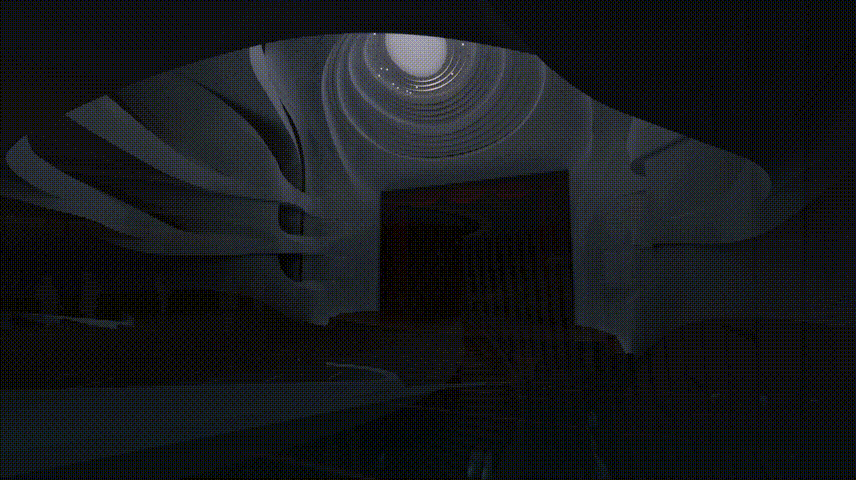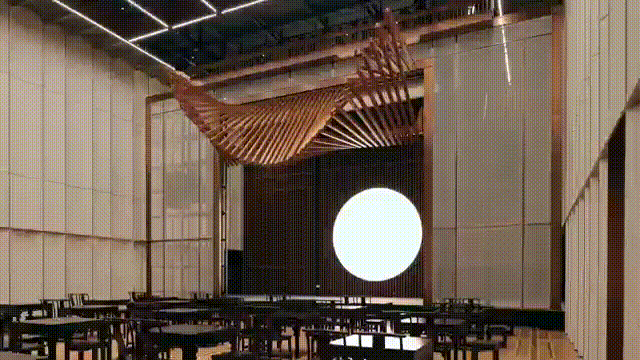查看完整案例

收藏

下载

翻译
Architects:TJAD
Area:144700m²
Year:2021
Photographs:SFAP,Xiu Yang
Theater Acoustic Consultant:Architectural Survey and Design Institute of Beijing University of Technology
Interior Construction Drawing Design:Shenzhen Zhongfutai Cultural Architecture Construction Co. Ltd,Suzhou architectural decoration design and Research Institute Co. Ltd
Principals In Charge:Wensheng Wang, Jun Zhou
Design Team:Luoxian Zhang, Wensheng Wang, Jun Zhou, Heng Li, Xiyin Ma, Wen Ye, Xiuwen Xi
Interior Design:Heng Li, Ke Xu
Structural Design:Jiemin Ding, Tao Zhang, Wei Ju, Gang Jin, Yang Guo, Jiguo Li, Dongya Ma, Chao Wen, You Zhou, Chunguang Meng, Songshuo Wang
Water Supply And Drainage Design:Tanchun Gui, Wei Feng, Beirong Huang, Biao Zhang, Defu Mao, Xiabin Chen, Jianhui Zhao, Lu Lu
Electrical Design:Qing Cheng, Mingzhe Feng, Jian Wang, Shulong Liao, Erfeng Xu, Peipei Wu, Yifan Wu
HVAC:Jian Wang, Huan Xu, Gang Zeng, Peng Zhou, Hoaxing Li, Sai Yao, Zizhen Ni, Jinsong Dong
Energy Saving Design:Chengyu Tang
Green Building Design:Bin Cai, Shixin Cui, Dongmei Li, Zhengyi Qian
Lighting:Xiu Yang, Chen Bian, Yue Ma, Xinghua Gu, Xiaqing Xu
Landscape:Jing Ai, Ranxi Zhu, Zehao Shen, Jichao Gao, Biao Zhang, Yanan Zhao
Bim Design:Yuya Yao, Runhui Wang, Zhiyue Chen, Hailing Gu, Dongrui Ling, Anyang Lu
Vr Aided Design:Ming Du, Cheng Wang
Cost Consultation:Zhifen Zhou, Fei Wang, Jingjing Gu
On Site Engineer:Xiaojing Zou
Curtain Wall Consultant:Wuhan Lingyun Architectural Decoration Engineering Co. Ltd,Shanghai Qidao Curtain Wall Engineering Co. Ltd
Stage Equipment:DRFT
City:Yangzhou
Country:China
Text description provided by the architects. As the most important cultural facility in the city, today’s theater should not be reserved just for art lovers or tourists, but to find ways to integrate into the daily life of the public. The design focused on the relationship between landscape, building, and urban space, and explored a place that is more popular and attractive than a building, a theater, or a garden.
Yangzhou is a historic city famous for its gardens, canal, culture, and art. The Grand Canal Theatre was built as the most important cultural complex in the city. With a total construction area of 144,700 square meters, it features a 1600-seat opera hall, an 800-seat drama hall, a Multi-function hall, and a Chinese opera hall. TJAD won the international design competition and was awarded the general contract for the design of this project. The theater has officially opened in July 2021.
The Moon Garden and the Art Bridge. Since the site locates between the city and the lake the design put the continuity of urban space first. A courtyard, not a building, becomes the core of the site where the public is welcome to visit whether the theatre is performing or not. The south side of the building toward the lake was built as a bridge in the air to bring the lake view inside and to link the cultural center and exhibition center on both sides.
Stone and Bamboo. The simple and powerful volume covered by stone responds to the past of the ancient city, at night it turns into a dynamic screen showing the modern and vibrant face of Yangzhou. The glass curtain walls and terraces around the inner courtyard blur the boundary between indoor and outdoor. People can explore the facade's paths and ascend the building like wandering in bamboo forests.
Interior space. As a place for public events, communication, and exhibition, the interior space creates a continuous and fluid image through curved walls and ceilings. All theaters feature professional equipment to achieve world-class acoustics and are flexible enough to perform in many ways. The four theaters are all different in materials, colors, and atmospheres to form a cultural connection with the four seasons of Yangzhou.
1600-seat grand theater: The auditorium is a classic horseshoe theatre built for opera and ballet. It houses approx 1600 visitors in three layers. The whole space seems to be wrapped around by petals. All the lights and audio equipment are well hidden between petals and can be flexibly adjusted according to the needs of the performance.
800-seat theater: The hall has a horseshoe-shaped plane and a framed stage for children’s drama, acrobatics, magic shows, etc. It houses approx 800 visitors in two layers. The ear platforms on both sides in conjunction with the active orchestra pit expand the area of the stage to let actors and the audience get closer. The strip-shaped GRC walls on both sides grow from the ground up like bamboo and join together at the ceiling.
300-seat Multi-function hall: The multi-function hall is designed in black box mode, equipped with movable seats, an active stage, and lighting equipment to make it flexible for shows, rehearsals,s, and movies. The walls around are enveloped by a series of acoustic modules which are designed in the shape of ginkgo leaves.
Chinese Opera Hall: In the past Chinese opera was always played outdoor such as courtyard or plaza where the audience can chat and have tea and snacks at the same time. We decide to reproduce a traditional life scene in a modern theater: the space is planned like an inner courtyard with an upper balcony around. All the seats and tables are movable and food is allowed here. The transformable screen in front of the stage makes it flexible for different needs.
Lobby in the air: The east and west buildings are connected on the 5th floor by a 50m long sky corridor. It serves as a public and multifunctional lobby with a panoramic view of Moon Lake and the city. The water wave pattern on the ceiling fits the shape of the structural truss and makes the space fluid and light.
Structure and Curtainwall. In order to unify the interior space and the exterior facade of the building and obtain better visual effects, the design of the steel structure of the entrance hall uses digital form-finding to keep the structural components highly consistent with the building facade. Through modeling and analysis of the hyperbolic curtain wall, the structural columns, glass, and decorative rods are all optimized as plane components, which greatly reduces the cost and construction difficulty.
Green building. Natural wind in summer is introduced through the inner courtyard, combined with green plants adapted to Yangzhou's climate and soil conditions, to create a comfortable microclimate for outdoor activities. Sunshine simulations results show that the building has sufficient sunshine throughout the year, thus maximizing the use of solar energy. The well-designed double skin system provides passive ventilation and natural sunlight to reduce the use of air conditioning and artificial lighting.
Project gallery
Project location
Address:Yangzhou, Zhejiang, China





























































